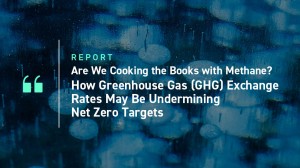From a Article by Ben Tracy & Kerry Breen, CBS Morning News, December 2, 2023
Fossil fuel debate takes center stage at COP28:
>>> A coalition of 50 major oil and gas companies said at COP28 on Saturday that they would work to cut methane emissions by 80 to 90% by the end of the decade, marking a potential breakthrough in the fight against climate change.
>>> The Biden administration, represented at COP28 by Vice President Kamala Harris, also announced new rules to limit methane gas emissions in the U.S.
Methane is an invisible gas that is rapidly heating up the atmosphere. It’s released into the atmosphere in a number of ways, including leaks during fossil fuel production, from the digestive systems of cows, and from rotting food in landfills. The gas is like carbon dioxide on steroids and is 84 times more powerful at warming the planet. Unlike carbon dioxide, which can stay in the atmosphere for centuries, methane only lasts for about a decade.
Ilissa Ocko, a senior climate scientist with the Environmental Defense Fund said reducing methane emissions is the “single fastest opportunity” the world has to “slow down the rate of warming.”
“Methane is a greenhouse gas. It is the second largest contributor to climate change and it accounts for more than a quarter of the warming that we’re experiencing today,” Ocko said. “We have the technologies available to cut methane emissions globally in half over the next ten years. and if we do that then we can slow down the rate of global warming by 30%.”
Slowing warming could mean fewer destructive storms, wildfires and heatwaves. It could also lead to slower melting of the world’s ice sheets, which is causing sea levels to rise. In Boulder, Colorado, scientists like Ocko are using new technology to track where methane is being released, and by whom.
The scientists use infrared cameras to find the gas. Methane is detected through the bottom of the plane. In places like the Perman Basin, the largest oil field on the planet, special sensors on the plane detect methane leaks from oil and gas facilities on the ground. According to the Environmental Defense Fund, these industries account for about a quarter of all human-made methane emissions, and knowing where the leaks are can help in identifying polluters and holding them responsible.
Another tool, called the Methane Sat, is in the works. This is a $90 million satellite being built for the Environmental Defense Fund by Blue Canyon Technologies, in part with money from Amazon founder Jeff Bezos’ Earth Fund. The satellite, which will be powered by solar panels is expected to launch next year atop a SpaceX Falcon 9 rocket. Once in orbit, it will find and map methane leaks around the world, 24 hours a day.
“This will absolutely be a game-changer,” Ocko said. Part of her passion to slow warming is her four-year-old daughter.
“It really worries me what the climate will be like when she’s my age,” Ocko said. “I look at my daughter every day, and I just want the best for her, and a huge part of that is the world that we’re leaving behind.”
#######+++++++#######+++++++########
Clean Energy 101: Methane-Detecting Satellites, Rocky Mountain Institute, February 8, 2023
Satellite “completeness” is a new and powerful concept in the push to slash climate pollution.
Satellites are growing in prominence as an important tool in addressing the climate crisis by spotting global emissions. There are already dozens of greenhouse gas-detecting satellites in orbit today, and both public and private institutions have announced plans to launch more in the future. Additionally, at COP27, the UN announced a new high-tech, satellite-based global methane detection initiative — The Methane Alert and Response System (MARS) — which will leverage satellite data to alert governments, companies, and operators about large methane sources to foster rapid mitigation.
RMI’s new report and Satellite Point source Emissions Completeness Tool (SPECT) aim to help users understand and assess satellite “completeness” as it relates to identifying and tracking super-emitters of methane, a greenhouse gas (GHG) 85 times more potent than CO2 on a 20-year time frame. Here, we unpack the definition, context, and importance of satellite completeness as a new and powerful tool in the push to slash climate pollution.
https://rmi.org/clean-energy-101-methane-detecting-satellites/

